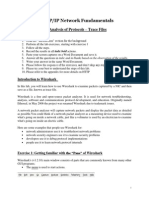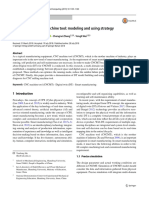0% found this document useful (0 votes)
103 views30 pagesM3, C2 CAP Theorem
The document discusses the CAP theorem and NoSQL data architecture patterns. It begins by explaining the CAP theorem, which states that a distributed data store can only guarantee two of three properties: consistency, availability, or partition tolerance. It then provides definitions and examples of consistency, availability, and partition tolerance. The rest of the document discusses schema-less data models, flexibility in NoSQL data stores, the BASE consistency model, and common NoSQL data store categories including key-value stores, document stores, and graph databases.
Uploaded by
ShrinivasaCopyright
© © All Rights Reserved
We take content rights seriously. If you suspect this is your content, claim it here.
Available Formats
Download as PDF, TXT or read online on Scribd
0% found this document useful (0 votes)
103 views30 pagesM3, C2 CAP Theorem
The document discusses the CAP theorem and NoSQL data architecture patterns. It begins by explaining the CAP theorem, which states that a distributed data store can only guarantee two of three properties: consistency, availability, or partition tolerance. It then provides definitions and examples of consistency, availability, and partition tolerance. The rest of the document discusses schema-less data models, flexibility in NoSQL data stores, the BASE consistency model, and common NoSQL data store categories including key-value stores, document stores, and graph databases.
Uploaded by
ShrinivasaCopyright
© © All Rights Reserved
We take content rights seriously. If you suspect this is your content, claim it here.
Available Formats
Download as PDF, TXT or read online on Scribd
/ 30



























































































